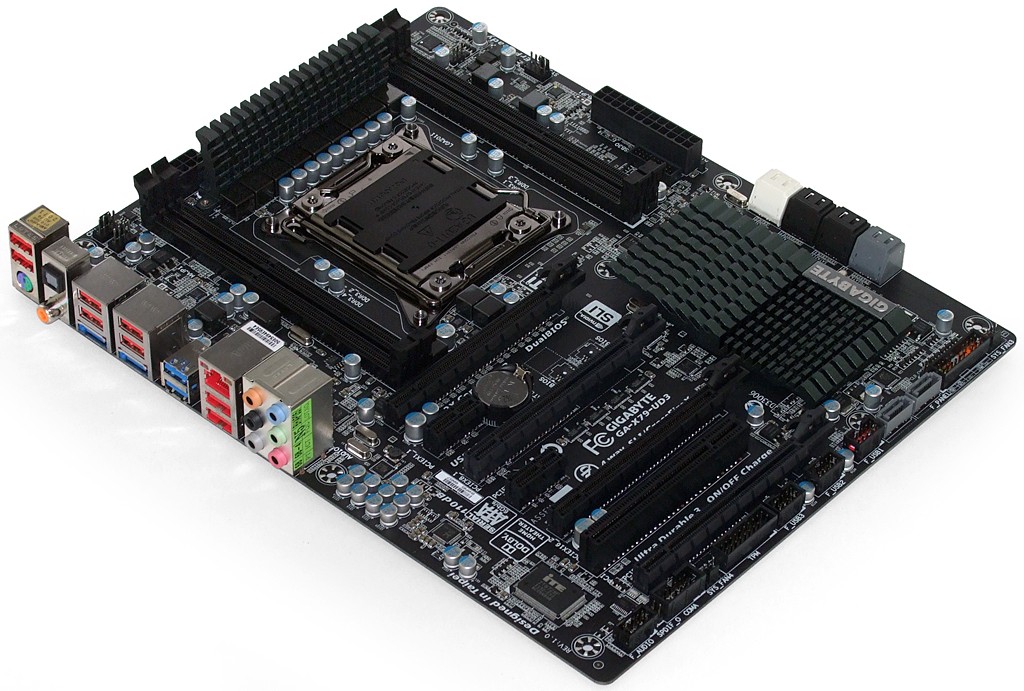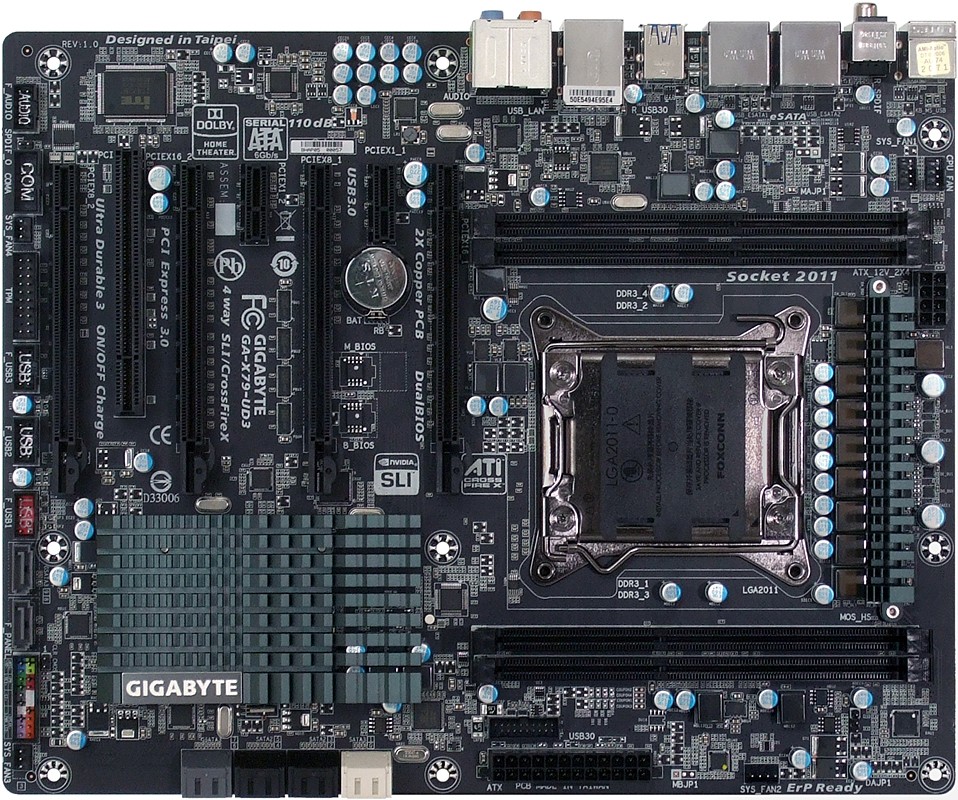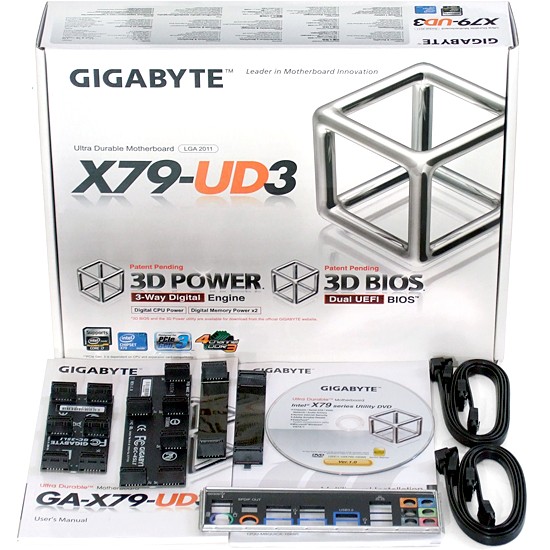Seven $260-$320 X79 Express Motherboards, Reviewed
With 40 lanes of PCIe 3.0 connectivity to host all of our high-bandwidth devices, LGA 2011 certainly qualifies as a premium processor interface. Today we examine seven X79-based motherboards that offer high-end features at a more palatable price.
Gigabyte GA-X79-UD3
We've seen a lot of excitement surrounding Gigabyte’s $260 X79-UD3, from early overclocking failures to recent spectacular successes. But before we consider the firmware that bridges this transition, a quick look at the hardware could demonstrate why this continues to be such a newsworthy product.
The least-expensive of today’s contenders, the X79-UD3 still includes a standard set of mid-market enthusiast features, such as front- and rear-panel USB 3.0, eSATA, and two additional SATA 6Gb/s ports via a third-party controller. Gigabyte goes one step further, though, by endowing this product with four-way SLI support, rather than the three-way capability we'd expect to find on a more affordable platform, besting its own X79-UD5.
Gigabyte does remove a few things to facilitate the X79-UD3’s lower price, such as the UD5-version’s Bluetooth/Wi-Fi card and eight-DIMM support. But only a minority of enthusiasts will miss those particular features (surely not the gamers who prefer to play over wired network connections).
The X79-UD3’s only major layout weakness comes from the placement of two SATA ports along the bottom edge, where attached cables would typically block the installation of a fourth graphics card. While most users in the -UD3's target market don’t actually want or need ninth and tenth internal drives, they're equally justified in not wanting to pay for a feature they can’t use.
A minor issue that affects installation into some cases is the bottom-rear-corner audio connector, which is roughly half of an inch beyond the reach of many front-panel audio cables. A larger problem could be USB 2.0 and front-panel LED/power header placement, since those cables must typically be smashed flat to fit beneath a performance graphics card’s oversized fan cover. There are no perfect solutions to that problem, though the base of the plastic shell that surrounds each header also forces it to be roughly 1 mm taller.
Though only four SATA cables are included, the X79-UD3 adds an impressive collection of bridges to enable multi-card graphics arrays. CrossFire and SLI are presented alongside three- and four-way SLI, and users who need more-elaborate CrossFireX configurations will usually find an extra bridge with each of their cards.
Get Tom's Hardware's best news and in-depth reviews, straight to your inbox.
-
Crashman jprahmanSo when will we see results with a C2?It's going to take around a month to prepare another roundup...so I guess good news comes with bad news, sorry.Reply -
Crashman amuffinfoxconn boards are pretty good.They've been making decent enthusiast boards on-and-off for a while.Reply -
morne Quick coment on looks only (I know its specs that count not looks but oh well)Reply
ASRock X79 Extreme6/GB - very nice all black looks better than gigabytes atempt
Asus P9X79 Pro - new baby blue they use on all the boards... not for me
ECS X79R-AX - looks like my old pentium 2 board with the white slots
Foxconn Quantumian-1 - i like i like gives a feeling of the ROG ASUS boards
Gigabyte X79-UD3 - rip of from the ASRock X79 Extreme6/GB (lol) plus the southbridge heatsink looks old fasion and ugly.
Intel DX79SI - now this board for me looks good actualy more than good looks the best :) must be the scull lol
MSI X79A-GD65 8D - also very nice love the blue + Black.
If you have one of the boards and i insulted it, wasnt the intention, just my view of the board>
-
stingstang My only question is.. Why do you guys need 6 freaking $1050 processors? Good golly gosh!Reply -
ubercake Great descriptive article.Reply
One thing I'm not sure of is the acceptance and actual usage of eSATA. While practical at some level, is anyone actually using this MB feature or is this one of those things the MB producers can skip out on like parallel and serial ports? I'm not sure enthusiasts are all that into using their eSATA ports?
Personally, I think this is one of those money saving opportunities MB producers should consider. -
geekapproved After the X58 anal pounding, you would be a moron to buy a X79. It's life is predicted to be even shorter than X58.Reply -
morne Actualy i agree with you ubercake, i have never used my E-sata, and with usb 3.0 out doubt anyone still uses E-sata if they have before.Reply



